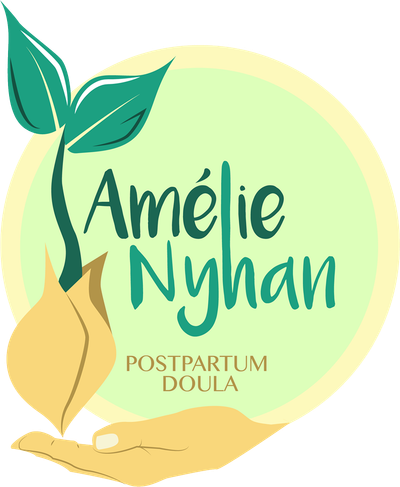Physiology of the human body during normal pregnancy and in the early postpartum and the role of nutrition in the postpartum recovery
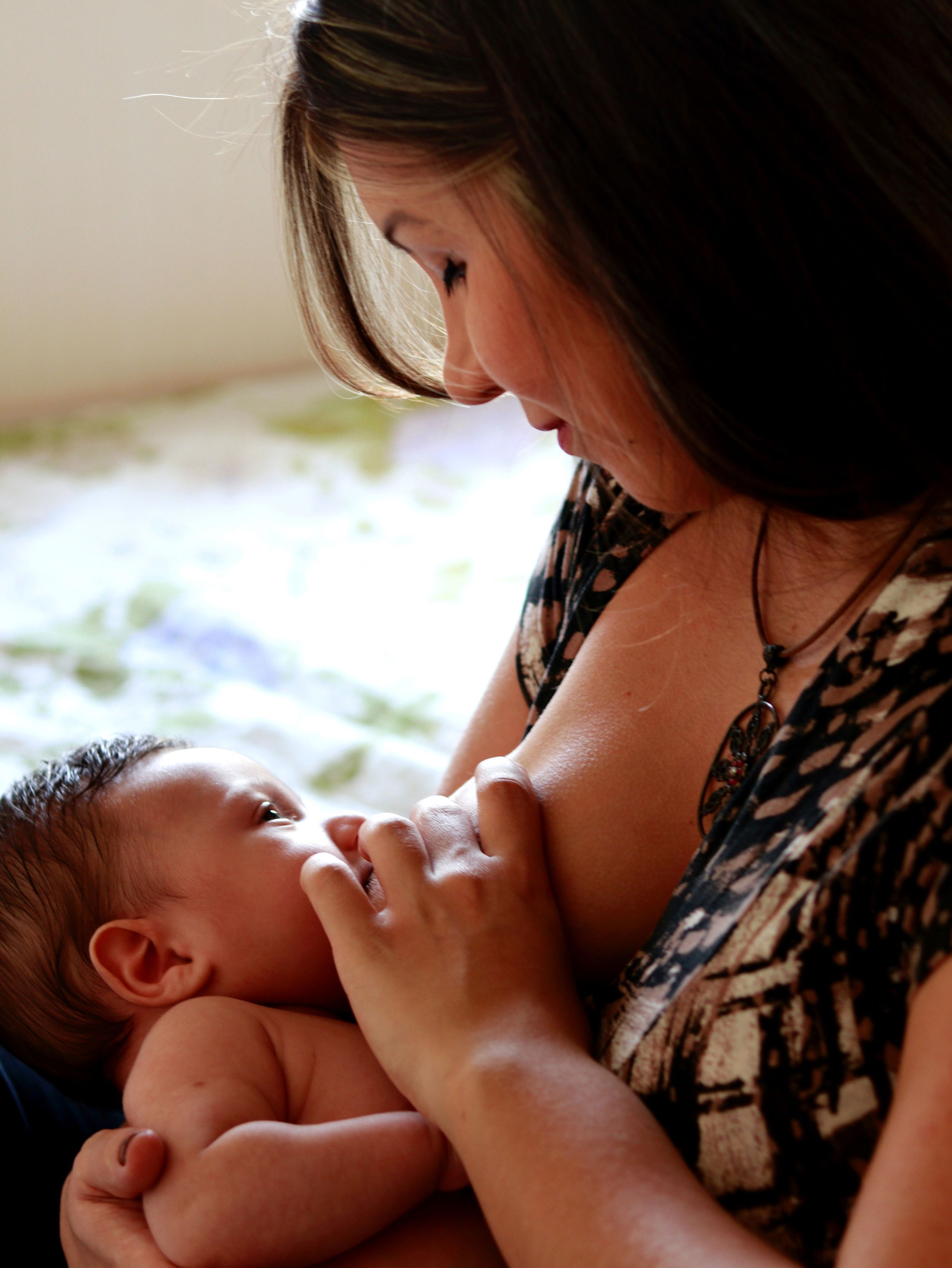
Pregnancy and labour have an effect on virtually every part of a woman’s body, every system being affected by the growth of the foetus and great hormonal changes. A pregnancy typically last for approximately 270 days, during which the body will undergo extreme changes that will eventually need to revert back throughout the postpartum period.
“There is consensus that the postpartum period begins upon delivery of the infant. The end is less well defined but is often considered the six to eight weeks after delivery because the effects of pregnancy on many systems have largely returned to the pre-pregnancy state. However, all organ systems do not return to baseline within this period, and the return to baseline is not necessarily linear over time". For this reason, some authors describe women as postpartum for as long as 2 years after delivery.
In this essay, we will firstly describe the changes that physically occur within a pregnant person’s body during pregnancy, from conception to delivery; outlining each system that is impacted by the growth of the foetus. In the second part, we will study how nutrition can impact the postpartum recovery process, looking specifically at how specific nutrients impact both physical and mental recovery during the extended postpartum period.
Physiology of the human body during pregnancy and the early days after birth
The pelvic floor and the uterus
During pregnancy, the cervix serves as a protective barrier from invading microorganisms and it is also important in retaining the foetus in the uterus (Word et al 2007).
“Stretching of the cervix is resisted due to its high content of connective tissue, which is made up of collagen-fibre bundles."
Cervical ripening refers to the softening of the cervix that occurs before labour. Without this process, the cervix cannot dilate. It occurs in response to oestrogen, relaxin and prostaglandins breaking down cervical connective tissue. Infiltration of the cervix causes collagen degradation.
(Source: https://nursekey.com)
During pregnancy, Relaxin has a softening effect on the pelvic floor, due to it being 70% connective tissue. The pelvic floor muscles and vagina also stretch considerably during vaginal childbirth, and the pelvic floor may experience tearing. The uterus returns to its pre-pregnancy size rapidly after birth. It begins to shrink and halves in size in a week. By six weeks, the uterus has returned to its pre-pregnancy size.
Circulatory system
Changes in the cardiovascular system in pregnancy are profound and begin early in pregnancy, such that by eight weeks’ gestation, the cardiac output has already increased by 20%. This cardiac output increases by a total of 40% during pregnancy. Cardiac output returns to normal (pre-pregnancy values) approximately two weeks after delivery.
Some pathological changes (e.g. hypertension, pre-eclampsia) may make this process much lengthier. The increase in plasma volume plays a critical role in maintaining circulating blood volume, blood pressure and uteroplacental perfusion during pregnancy
(Source: https://www.ncbi.nlm.nih.gov).
Bleeding
During and after the delivery of a baby, the birthing person will experience some blood loss. This blood loss generally lasts for approximately 6 weeks. The lochia is a combination of mucous, tissue and blood that the womb sheds as it replaces its lining after birth. Normal bleeding after the birthing process, as well as heavy blood loss and haemorrhage can have a severe impact on a woman’s energy levels, physical and mental abilities as well as on her general recovery process. This blood loss, normal or problematic can easily lead to anaemia.
“The abdominal muscles keep your internal organs in place as well as supporting your spine. In pregnancy they also support your growing baby and uterus. The abdominal muscles and ligaments stretch throughout pregnancy.” “A ligamentous band called the Linea Alba holds the Recti together. This band softens and stretches as the abdomen enlarges during pregnancy and allows the Recti to move apart (Diastasis Recti)” (Source: https://www.nbt.nhs.uk/).
The recovery of the abdominal wall is relatively slow. This recovery process can be ongoing for the first year after birth and into the second. Muscles in our body are made of approximately 80% proteins, making these an essential part of nutrition in postpartum recovery.
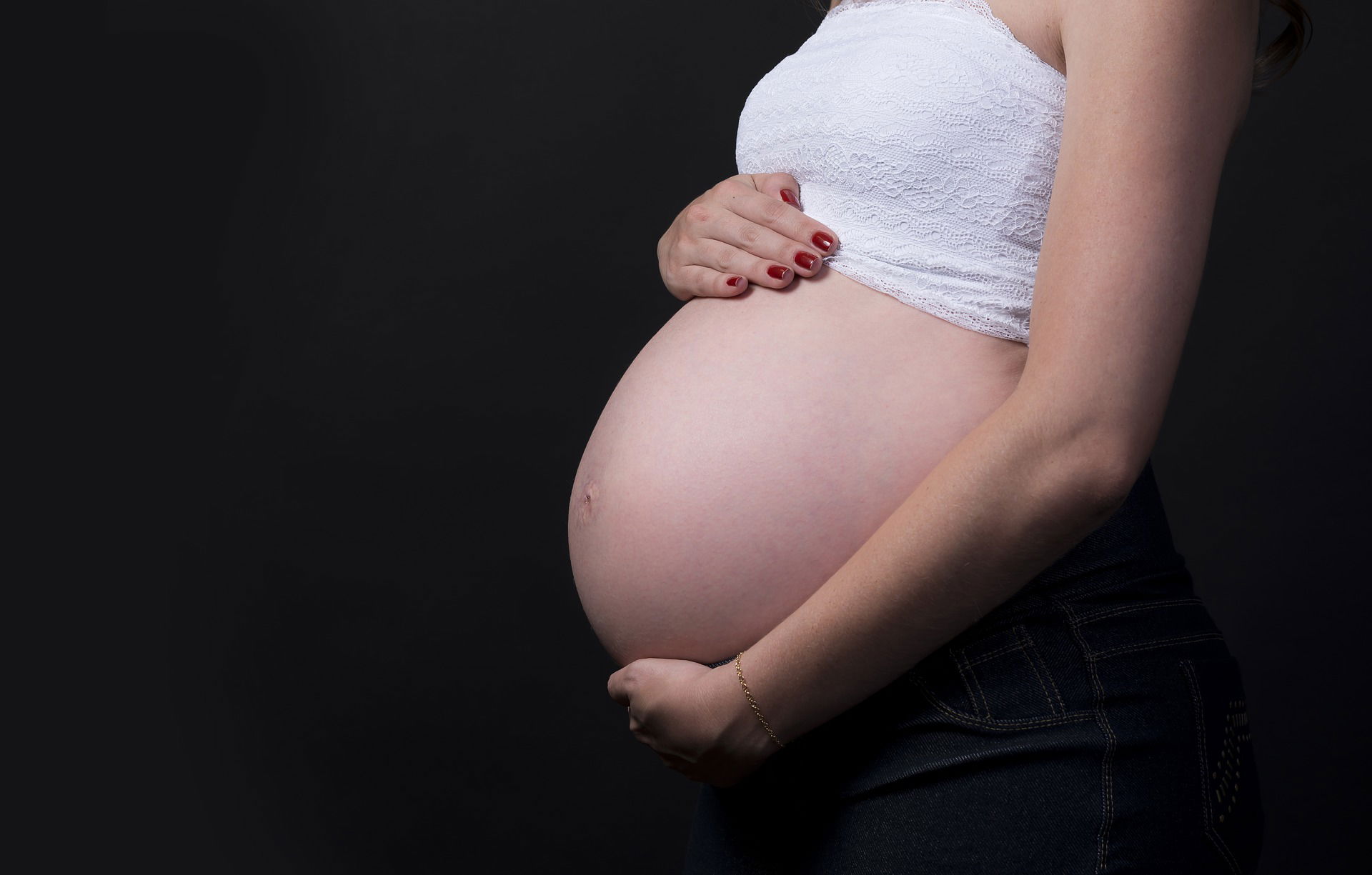
Gastrointestinal system
Nausea and vomiting are very common complaints in pregnancy, affecting 50–90% of pregnancies. The levels of hCG peak at the end of the first trimester, correlating with the nausea symptoms. “As pregnancy progresses, mechanical changes in the alimentary tract also occur, caused by the growing uterus. The stomach is increasingly displaced upwards, leading to an altered axis and increased intra-gastric pressure. The oesophageal sphincter tone is also decreased and these factors may predispose to symptoms of reflux, as well as nausea and vomiting.”
Changes in lipid metabolism accommodate the needs of the developing foetus. Increased triglyceride levels provide for the mother’s energy needs while glucose is spared for the foetus. Amino acids are actively transported across the placenta to fulfil the needs of the developing foetus. The average foetus requires about 30 g of calcium to maintain its physiological processes. Most of this calcium is transferred to the foetus during the third trimester and is derived from increased dietary absorption by the mother.
The joints and organs
Joint pain during pregnancy is a combination of several factors, including: ligament relaxation, increased weight on lower extremities and the postural shifts that occur to accommodate the pregnancy. Certain areas of the body experience more joint pain during pregnancy, such as, the ligaments supporting the spine, the joints between the tail bone area and pelvis, Lumbar area (lower back), the knee joints and the pelvic joint.
Hormones and emotional changes
Virtually all of the effects of pregnancy and labour can be attributed in some way to the influence of hormones, particularly oestrogens, progesterone, relaxin, oxytocin and hCG.
Relaxin plays an important role in the regulation of haemodynamic and water metabolism during pregnancy. It increases the elasticity of the pubic joint and pelvic ligaments.
Oestrogen is produced in early pregnancy to support the foetus until the placenta takes over. It helps the development of the foetus’s organs and the correct function of the placenta. Later in pregnancy, oestrogen helps to prepare the human body for lactation. It also enables the uterus to respond to oxytocin during labour and the birthing process (Source: nct.org.uk).
Progesterone is also a hormone produced in early pregnancy to support the pregnancy until the placenta takes over. Progesterone causes an increase in blood flow to the womb.
Oxytocin is responsible for initiating uterine contractions. At around 36 weeks’ gestation, under the influence of oestrogen, there is an increase in the number of oxytocin receptors present within the myometrium (the smooth muscle tissue of the uterus). Oxytocin levels increase in pregnancy and peak at term.
Other hormones levels increase throughout pregnancy, labour and the early postpartum and all play a part in this process on a physical and emotional level.
Cortisol levels increase at the end of the first trimester and are three times higher than non-pregnant values at the end of pregnancy.
Prostaglandins are directly responsible for uterine contraction.
Weight gain
The most obvious anatomical sign of pregnancy is the dramatic enlargement of the abdominal region, coupled with maternal weight gain. This weight results from the growing foetus as well as the enlarged uterus, amniotic fluid, and placenta.
A weight gain of approximately 0.45 kg (1 lb) per month is common. On average, by term of the pregnancy, the extra weight is distributed in the following manner: the baby, on average 3.5kg; the placenta and amniotic fluid, 2.5kg; increase in breast tissue, 1.5kg; extra fluid, 1.5kg; extra blood flow, 2kg; energy stored as fat, 3.5kg.
This distribution of weight leads to a relatively rapid weight loss soon after the birth which will impact the stretching of the skin as well as the shifting of internal organs, not to mention the emotional impact on the person as they see the extreme changes their body is experiencing.
Respiratory system
“There is a significant increase in oxygen demand during normal pregnancy. This is due to a 15% increase in the metabolic rate and a 20% increased consumption of oxygen.” (Source: https://www.ncbi.nlm.nih.gov)
Due to extra weight being gained rapidly, as well as physiological processes demanding more oxygen to be pumped around the body rapidly, pregnancy may be accompanied by a subjective feeling of breathlessness. This is most common in the third trimester but may start at any time during gestation.
The brain
There are only a few studies observing and drawing conclusions on brain activity and changes during pregnancy. However, those few studies show us that major changes are at play in certain areas of the brain throughout pregnancy. These changes are very possibly hormone driven “like oestrogen, progesterone, and others most likely drive the changes in the brain structure and function during pregnancy. Hormones can exert a powerful influence on brain cells, and no time in a person’s life produces more extreme hormone fluctuations than pregnancy”. (source: https://www.brainfacts.org/) Enhanced social cognition might help a mother take care of her baby, enabling her to decode the child’s various coos and cries and figure out what she needs.
This significant ‘brain remodelling’ is thought to persist for 2 years after the pregnancy. This process is sometimes called ‘Matrescence’ and is compared in many ways to adolescence.

Lactation
During pregnancy , the breast undergoes both anatomic and physiologic changes to prepare for lactation. The mammary gland is composed of milk-transporting lactiferous ducts, which expand and branch extensively during pregnancy in response to oestrogen, growth hormone, cortisol, and prolactin. In response to progesterone, clusters of breast alveoli bud from the ducts and expand outward toward the chest wall. Milk production in the breast may starts around the 16th week of pregnancy in the form of colostrum.
The physiological process of birthing
The physiological process of labour is mainly hormone driven with rapid changes in the uterus and cervix areas. In order to birth the baby vaginally, a woman’s cervix must dilate to 10 cm. This process can happen over a few days or only a few hours. The dilation of the cervix happens within a positive feedback loop involving several hormones such as oxytocin, contraction of the uterus and effacement and dilation of the cervix itself. During a vaginal birth, there is “significant stretching of the vaginal canal, the cervix, and the perineum”.
The role of nutrition during the early postpartum
Gaining your energy back
In the immediate days after giving birth to her baby, a woman should prioritise rest, establishing breastfeeding and bonding. Nourishing and warming foods should be readily provided to her while she recovers.
During the first 2 to 3 days postpartum, a woman may experience afterpains, related to the contraction of her uterus; blood loss; mood swings and baby blues as well as soreness around the pelvic area or around the caesarean scar. In order to support this very early recovery, foods that are easily digested, packed with nutrients such as iron, omega 3, calcium, magnesium, fibre and collagen should be provided throughout the day.
Getting the right nutrients, minerals and vitamins to avoid anaemia
"Pregnancy causes a two- to three-fold increase in the requirement for iron, not only for haemoglobin synthesis but also for the foetus and the production of certain enzymes. There is a 10- to 20-fold increase in folate requirements and a two-fold increase in the requirement for vitamin B12"
(source: https://www.ncbi.nlm.nih.gov)
B12 vitamin is considered essential during pregnancy and the postpartum as it plays a role in preventing anaemia and nervous disorders. It is a water-soluble vitamin. A deficiency in B12 vitamin can lead to irrational anger (Nourishing Traditions, S. Fallon, 2001). B12 vitamin is found in animal products naturally such as liver and other organs, clams and sardines.
Iron stores need to be replenished due to blood loss during and after childbirth. Iron rich foods that are readily absorbed include liver, green leafy vegetables such as spinach and cabbage, pumpkin or sesame seeds and tofu.
Breastfeeding women need 500 micrograms (0.5 milligrams) of Folic Acid. “Good sources of folic acid include fortified breads and cereals. Folate is the natural form of this vitamin and is found in leafy green vegetables, citrus fruits, avocados, lentils, and beans.” (Source: https://kidshealth.org)
Getting your digestive system back on track
During the postpartum recovery, the foods offered to the birthing person should be warming and easily digested. While fibres are essential to prevent constipation, it is important to provide foods that won’t irritate the digestive system as the organs slowly return to their pre-pregnancy place.
Soups and vegetable stews are great options that provide essential nutrients and are easily digested. It is important to mix the type of fibre rich foods you eat between water soluble and non-soluble fibre. “Soluble fibre soaks up water like a sponge and helps to bulk out our faeces so it can pass through the gut more easily. It acts to slow down the rate of digestion.” Those are found in fruits and vegetables, oats, bran, flaxseeds, legumes and soy products for example.
Insoluble fibre “does not absorb water and speeds up the time that food passes through the gut. A major role of insoluble fibre is to add bulk to faeces and to prevent constipation and associated problems.” Those are found in the skin of fruit and vegetables, nuts and seeds and wholegrain foods. (Source: https://www.betterhealth.vic.gov.au)
In order to provide your body with a balance of easily digested foods and lesser irritation to your digestive system, fibre should be paired with probiotic rich foods such as kimchi, full fat live yogurt or kefir.
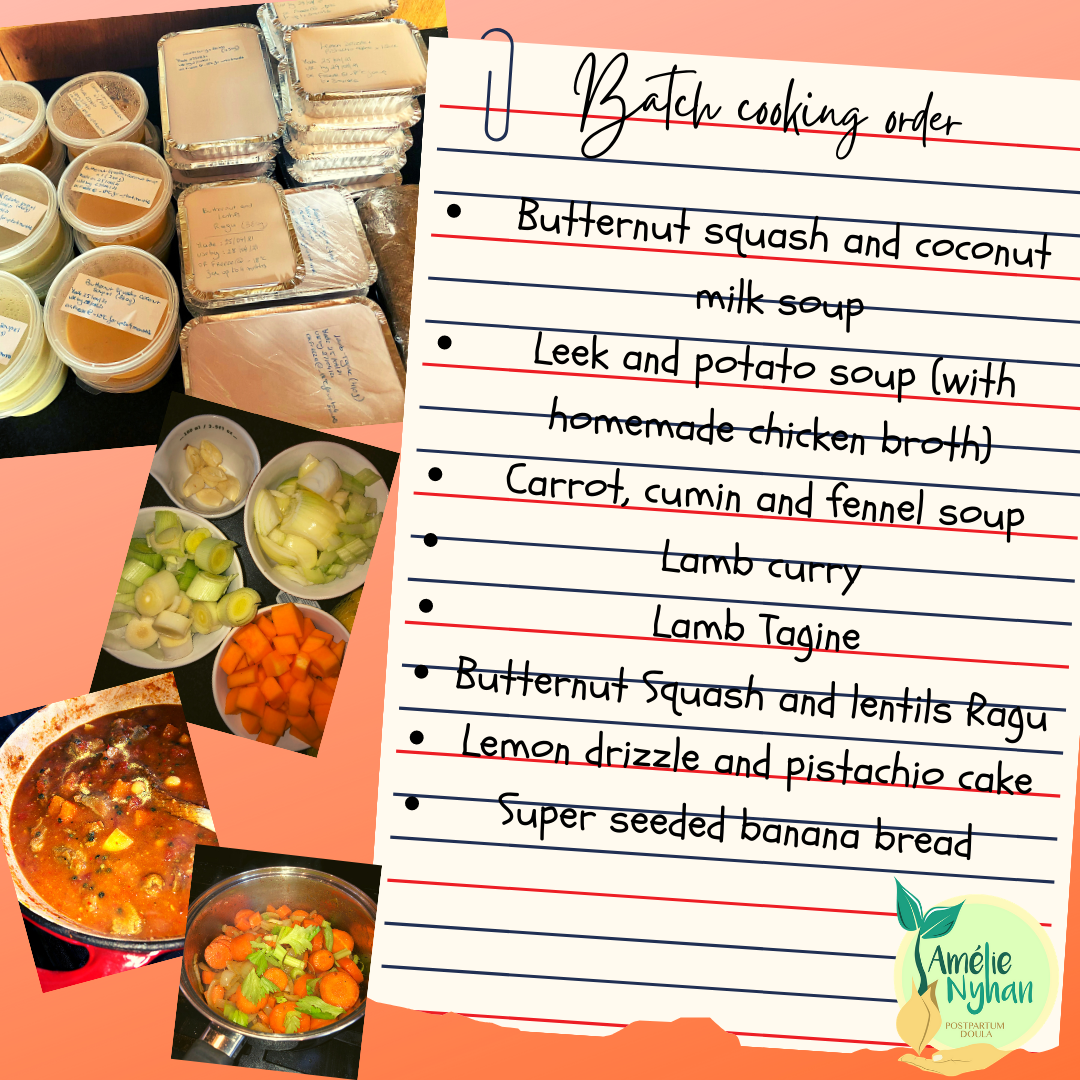
Hormone boosting nutrients and where to find them
“Immediately after you give birth to your placenta, your progesterone levels plummet back to what they were pre-pregnancy as your oestrogen levels remain high. Progesterone is known for its calming, mood-elevating effects, so such an immediate and dramatic drop in this hormone can cause mood shifts that range from the baby blues to full-on postpartum depression.”
(Source: https://sofreshnsogreen.com)
Good quality lipids (fats) are essential to our health. A wide range of healthy fats are essential for the postnatal recovery process, for producing milk, for replenishing our lost stores and for brain and hormone health.
Fat rich foods such butter made with grass fed cow’s milk, oily fish packed with Omega-3, full fat natural yogurt, cold pressed nut or olive oils and eggs are all wonderful sources of all types of fats the body needs to function.
Magnesium is important for calming the nervous system, maintaining blood sugar balance and blood pressure. Some benefits of magnesium are that it reduces stress, improves sleep, and prevents many chronic diseases. Magnesium is found in whole grains, dark leafy green vegetables, dried beans and legumes and almonds.
Iodine is essential for thyroid function and fat metabolism. “During pregnancy and postpartum, the WHO recommends iodine intake be increased to at least 200 microg/day” (Source: https://pubmed.ncbi.nlm.nih.gov/17701774/). Iodine can be found in most sea foods, sea weeds, kelp, ‘iodized’ sea salt and dairy products.
Supporting the recovery of your joints and muscles
“Collagen is a protein that is essential to the health and function of connective tissues in your body. Connective tissues weave your different body parts — skin, bones, and organs.” After pregnancy and childbirth, due to tremendous changes within every part of the body, a collagen and protein rich diet is imperative.
Good quality proteins are found in oily fish, meats, bones, beans and wholegrain cereals. Pairing protein rich foods are a great combination for replenishing your stores of collagen and amino acids.
Bone broth is a fantastic source of collagen, proteins and essential minerals.
“In terms of nutritional information, one cup of bone broth contains 9g of protein, 40mg of calcium, up to 4.8mg of magnesium, up to 19mg of phosphorous, collagen, glucosamine, chondroitin, and amino acids.”
(Source: https://www.hollandandbarrett.ie/).
Zinc is required for mental development and for collagen formation amongst other functions. It is found in beef and chicken, nuts (cashew and almonds), lentils, oatmeal and mushrooms.
Chicken soup, good quality fish and free-range eggs are all sources of good quality proteins. They can be paired with citrus fruit or high antioxidant foods, to boost benefits and greatly support your physical and mental recovery as well as keeping tiredness at bay.
Best foods for the brain
“Both human and non-human animal research suggests that the brain undergoes substantial structural and functional changes during pregnancy and the postpartum period.” (Source: https://academic.oup.com)
Research shows that the best brain foods are the same ones that protect the heart and blood vessels, such as green leafy vegetables, fatty fish, berries or walnuts. Those foods provide the brain with essential nutrients: folate, Vitamin K, Omegas and copper amongst others.
Copper works with Zinc and vitamin C for a healthy immune system, collagen formation and healthy red blood cells. It also plays an important role in memory and brain function (Nourishing Traditions, S. Fallon, 2001). Copper is found in beef liver, shiitake mushrooms, cashew nuts, dark chocolate and sunflower seeds.
It is generally well established that optimum nutrition should be provided to the growing brain of babies, children and even throughout the adolescent years. However, it is less so emphasised during the postpartum period, although there is a growing body of research suggesting that the Matrescence process involves major brain structural changes such as pruning, reduction in size of the grey matter and major new connections.
Lactation and diet, myths and facts
“Breastfeeding mothers generally need more calories to meet their nutritional needs while breastfeeding. An additional 330 to 400 kilocalories (kcal) per day is recommended for well-nourished breastfeeding mothers.”
(Source: https://www.cdc.gov/breastfeeding/)
It is recommended that a breastfeeding mother have a nutrient dense diet with protein, Iodine, Choline, Omega-3, iron, zinc and B12 vitamins and wholegrain foods.
It is a myth to suggest that there are some foods to be avoided completely during breastfeeding. It is best to keep to a minimum caffeine consumption. Fish can accumulate mercury into its flesh, eating a wide variety of types of fish and choosing good quality fish is best.
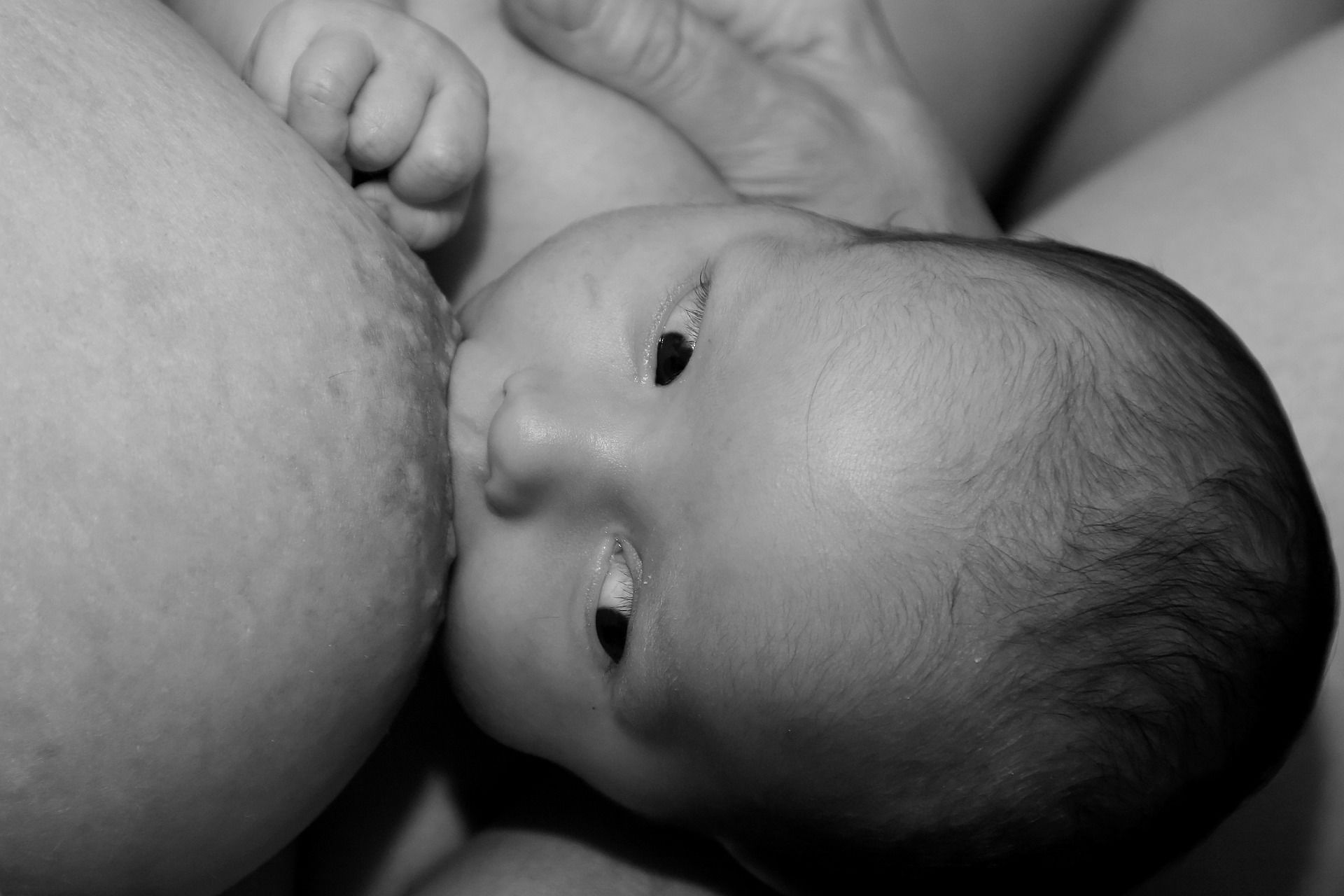
Conclusion
The postpartum period should be seen as a major life event, a milestone in a woman’s life and a respected rite of passage.
There are 4 main pillars to postpartum recovery. These are rest, nourishing foods, loving touch and the caring support of other women (your village). Without these essential components of postnatal care, a woman may be left feeling depleted and uncared for.
Nutrition should be kept at the heart of postnatal recovery for every woman. This allows her to recover physically from the pregnancy and childbirth experience, as well as providing her with energy during the early postpartum. A diet that provides the postpartum mum with nutrient dense meals, plenty of healthy snacks and generally warming and easily digested food is essential.
Replenishing her stores of nutrients and allowing her to rest should be the main priority. Social support from other women whom she can trust with her emotions, changes and with caring for her and her new-born is fundamental.
A Postpartum Doula with expertise in nutrition and postnatal recovery is an asset that should be considered for every new mother.

